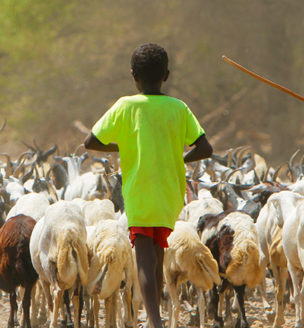There is mounting evidence that pastoralist communities are capable of sustainable resource management and that pastoralism contributes in important ways to national economies, particularly developing economies. Yet, while ranchers, the common label for pastoralists in industrial countries, routinely have secure title to at least some of the land they use; in developing countries, many pastoralists have continued to experience land loss, physical insecurity, and economic marginalization.
Pastoralists are agriculturalists who keep domesticated livestock on natural pastures and depend upon their animals as their primary source of income. Traditionally, pastoral land rights consisted of access to the key natural resources required to sustain mobile livestock production—pastures, watering points, and the movement corridors that linked together seasonal grazing areas, pastoral settlements or encampments, and markets. However, pastoralists and their property rights have been in retreat for several centuries. In recent decades, a variety of factors—land conversion, privatization, conflict, population pressure, and the creation of nature reserves, among other trends—have all led to the erosion of pastoral land rights, justified by “modernizing” agendas. The expansion of cultivated area can encroach on livestock trek routes, pastures, and around watering points, exacerbating existing herder-farmer conflicts as well as creating new disputes. Reconciling diverse and conflicting claims and overlapping resource rights are important to clarify and strengthen property rights regimes in order to make adjustments to land use less painful for pastoralists and nearby communities.
Photo Credit: Kelley Lynch / USAID


